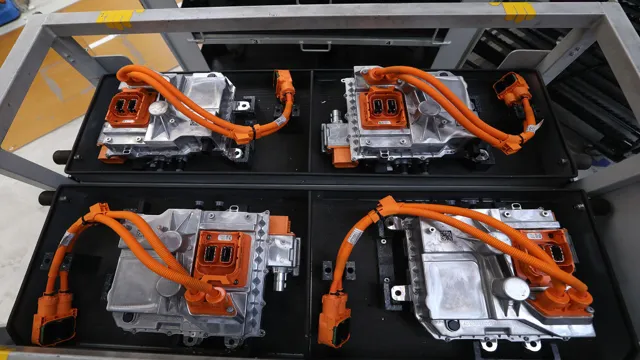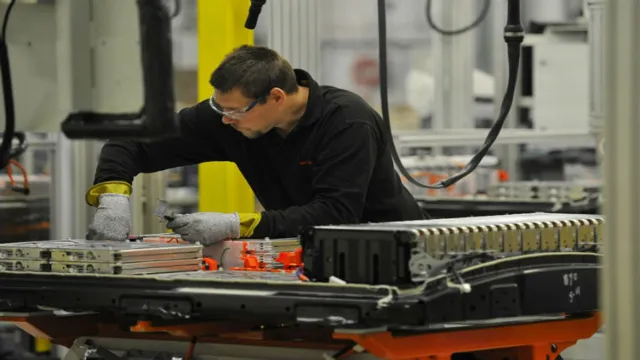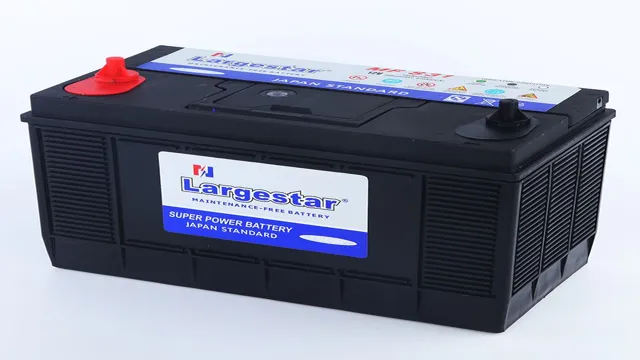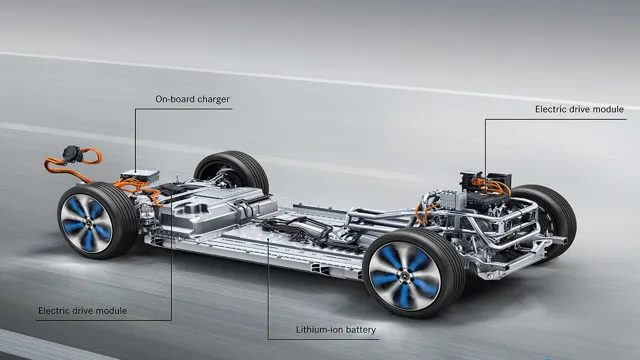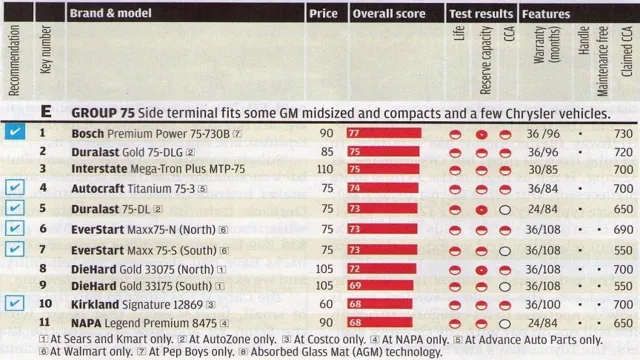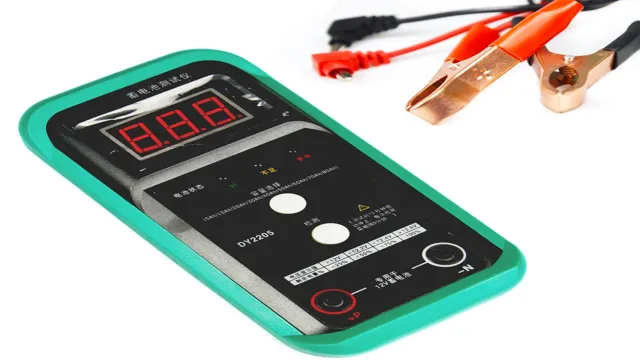Unleash the Power: Using Car Batteries as Home Electrical Sources
Have you ever been stuck at home without electricity? Maybe there was a power outage, or perhaps you simply forgot to pay your electric bill. Whatever the reason, being without electricity is a frustrating experience that can make you feel helpless. But did you know that you may have an untapped source of electrical power right in your own driveway? That’s right: your car battery can be used as a source of power for your home in a pinch.
With the right equipment and know-how, you can use your car battery to power small appliances, charge your phone, or even run a few lights. It may not be a permanent solution, but it can definitely help you out in a pinch. Of course, there are some safety considerations to keep in mind when using your car battery as an electrical source.
You’ll need to make sure that you’re using the right equipment, and that you’re not overloading your battery. You’ll also want to be careful when connecting your battery to your home’s electrical system, as there is a risk of electrical shock or fire if you don’t know what you’re doing. In this blog, we’ll go over everything you need to know to safely use your car battery as an electrical source.
We’ll cover the equipment you’ll need, the steps you’ll need to take to ensure safety, and some tips and tricks to make the most of your car battery as a home electrical source. So let’s get started!
Benefits and Limitations
Using car batteries as a home electrical source can have both benefits and limitations. One of the main advantages is that car batteries are readily available and can be easily recharged. This makes them a convenient and cost-effective option for homeowners who want to have a backup power source in case of a blackout.
Additionally, car batteries are portable and can be moved to different locations within the home as needed. However, there are also some limitations to using car batteries for home energy. For one, they have limited capacity and may not be able to sustain heavy power usage for extended periods of time.
They also require special equipment and knowledge to set up properly, which may not be feasible for everyone. Overall, using car batteries as a home electrical source can be a viable option for some, but it is important to weigh the benefits and limitations before making a decision.
Low Cost and Mobility
When it comes to low-cost and mobile solutions, there are both benefits and limitations to be considered. On the one hand, low-cost solutions can be accessible to a wider range of people who may not have the financial means for more expensive alternatives. This can be particularly helpful in developing countries or for individuals on a tight budget.
The mobility aspect can also provide a level of convenience that cannot be found with stationary solutions. However, there are also limitations to consider. Low-cost solutions may not have the same level of durability or quality as their more expensive counterparts and may not be able to withstand heavy use or rough conditions.
Additionally, a mobile solution may not always be able to provide the same level of functionality as a stationary one. So while low-cost and mobile solutions can be helpful in certain situations, it is important to carefully weigh the benefits and limitations before making a final decision.
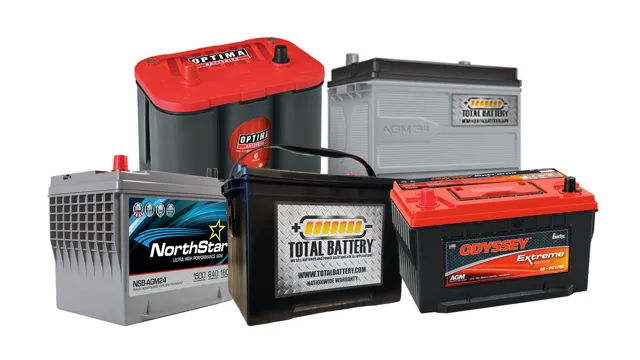
Short Lifespan and Limited Power Output
When discussing the topic of energy storage, one of the most commonly used methods is the battery. Batteries offer a convenient way to store energy for a variety of devices, from small handheld electronics to large electric vehicles. However, there are both benefits and limitations to using batteries as an energy storage method.
One of the main limitations is their short lifespan and limited power output. Over time, batteries lose their ability to hold a charge, and their overall power output decreases. Additionally, batteries have a limited storage capacity, which can make them unsuitable for some applications.
Despite these limitations, batteries remain a popular choice for energy storage due to their convenience and ease of use. By regularly replacing batteries, their lifespan can be extended, and their power output can be maintained at a reasonable level. Overall, while batteries may not be the perfect solution for every situation, they offer a reliable and efficient way to store energy for a variety of applications.
Steps to Connect Car Battery to Home Circuit
Ever wondered how you could use your car battery as a home electrical source? Here are some steps to connect it to your home circuit. First, you need to determine the power demand of your home appliances. Once you have an accurate figure, select an inverter that can supply the amount of power needed.
Then, purchase an isolation switch to disconnect the battery when not in use for safety reasons. Next, connect the battery to the inverter using thick cables. Finally, connect the output of the inverter to your home’s electrical circuit using a breaker or a fuse.
It is important to note that using a car battery as a home electrical source should be done with caution. If you are not confident in your skills, consult an electrician or a professional to ensure that you are operating within safe parameters. By following these steps, you can power your home using a car battery and save money on your electricity bills.
Gather Materials and Tools
Before attempting to connect a car battery to your home circuit, it’s important to gather all the necessary materials and tools. You will need a car battery, a battery charger, a battery terminal cleaner, a battery cable connector, a set of pliers, and a screwdriver. You may also need a voltmeter to measure the voltage of the battery.
It’s essential to ensure that you have all these materials and tools before you begin. If you don’t have any of these, you can easily purchase them at your local hardware store or online. Once you have everything you need, you can move on to the next steps of the process.
Keep in mind that safety should be your top priority, so make sure to follow proper procedures and take precautions when working with batteries to avoid any accidents or injuries.
Disconnect and Isolate Battery
When connecting your car battery to your home circuit, it’s important to first disconnect and isolate the battery. This step ensures your safety and prevents damage to your electrical system. Once the battery is disconnected, you can begin the process of connecting it to your home circuit.
The first step is to determine the voltage and amperage requirements of your home appliances and devices. This will determine the type of inverter you need to purchase. You’ll also need to consider the distance from the battery to your electrical panel, as this will affect the gauge of wire you need to use.
Once you have all the necessary equipment and have determined the specifications of your system, you can begin the process of connecting the battery to your home circuit. By following these steps and taking the proper safety precautions, you can successfully connect your car battery to your home circuit and have a reliable source of backup power.
Connect Inverter to Battery
If you want to connect an inverter to your car battery, there are a few steps you need to follow. Firstly, you need to make sure your car is turned off. This is extremely important as you don’t want to risk electrocution or damaging your car’s electrical system.
Next, locate your battery and remove the negative cable from the battery post. This will ensure that there is no electricity flowing to your inverter. Install the inverter’s positive and negative cables to the battery post using the appropriate connectors.
Then switch on the inverter and check to see if it’s working properly. Finally, you can plug in any electrical appliances you want to use on the inverter. You should know that you need to keep your car running while using the inverter to avoid depleting your car battery.
Just like when jumping a car battery, be sure to follow the correct order of connecting the cables to avoid short circuiting the battery. By following these simple steps, you’ll be able to power your home circuit using your car battery.
Connect Inverter to Home Circuit
Connecting a car battery to a home circuit can be a useful way to provide backup power in case of an outage. One way to do this is by using an inverter, which converts the DC power from the battery into AC power that can be used to power household appliances. To connect the inverter, begin by turning off the power to your home circuit and disconnecting it from the grid.
Then, connect the positive and negative leads from the inverter to the corresponding terminals on the car battery. Next, connect the AC output from the inverter to a circuit breaker on your home’s electrical panel. Finally, turn the power back on and test the system to ensure it is functioning properly.
It is important to note that improper installation can be dangerous, so consult a professional electrician if you are unsure about any steps. By following these steps, you can harness the power of your car battery to provide backup electricity for your home.
Precautions to Take
When considering using a car battery as a home electrical source, certain precautions should be taken to ensure safety and avoid damage to both the battery and your home’s electrical system. Firstly, ensure that the battery is not damaged or leaking before attempting to use it. Secondly, do not connect the battery directly to any electrical devices, as this can cause damage or even start a fire.
Instead, use a power inverter to convert the battery’s DC power to AC power that can safely be used in your home. It is also important to note that car batteries are not designed for long-term use as a primary electrical source and may eventually need to be replaced. As such, it is important to monitor the battery’s charge and replace it if necessary.
By taking these precautions, you can safely and effectively use a car battery as a backup electrical source for your home.
Avoid Overloading the Battery
When it comes to our mobile devices, one of the things we often overlook is taking care of the battery. Overloading the battery can result in serious damage and affect the overall performance of our phone. To avoid this, it is important to take a few precautions.
One of the easiest things to do is to avoid using our phones while it’s charging. This not only slows down the charging process but can also harm the battery. Additionally, using low-quality chargers can harm the battery and damage the charging port.
It is always recommended to use the original charger that comes with the device or a certified third-party one. It’s also important to keep our phone’s battery away from extreme temperatures. Too much heat or cold can damage the battery and shorten its lifespan.
Therefore, it is vital to use our phones sensibly and take care of its battery. This will ensure optimal performance and longer battery life for our mobile devices.
Protect Yourself from Electrical Hazards
Electrical hazards can be very dangerous and potentially fatal. You need to take precautions to protect yourself and those around you. One essential precaution is to always turn off the power before attempting any electrical work.
This will help prevent electrical shock and reduce the risk of fire. Another important thing is to wear appropriate personal protective equipment such as gloves, goggles, and boots. Additionally, make sure that your electrical equipment is in good condition, and if you notice any damage or defects, do not use them until they are repaired or replaced.
Also, avoid overloading circuits with too many appliances or devices. Doing so can cause electrical fires, electrocutions, and other hazards. In summary, be vigilant and take all necessary precautions to ensure your safety and well-being around electrical equipment and installations.
Conclusion
In conclusion, using a car battery as a home electrical source can be a creative and inexpensive solution for temporary power outages or small-scale projects. However, it’s important to remember that car batteries are not designed for long-term use as a home electrical source and they may not provide the amount of power required for larger appliances or devices. Plus, you don’t want to be left stranded with a dead car battery if you’re relying on it for home power! So, while it may seem like a bright idea to use a car battery as a home electrical source, be sure to use it with caution and keep a backup plan in place.
FAQs
Can a car battery be used as a home electrical source?
Yes, a car battery can be used as a home electrical source with the help of an inverter that converts the DC power from the battery into AC power suitable for home appliances.
What are the advantages of using a car battery as a home electrical source?
The main advantage is that it provides backup power during power outages. It is also portable and can be used in remote locations where there is no access to the grid.
What is the lifespan of a car battery when used as a home electrical source?
The lifespan of a car battery depends on several factors, such as usage, maintenance, and quality of the battery. On average, a car battery can last up to 5 years when used as a home electrical source.
What is the recommended wattage of the inverter when using a car battery as a home electrical source?
The recommended wattage of the inverter depends on the power consumption of the appliances that will be used. It is recommended to use an inverter that can handle at least 150% of the maximum power consumption of the appliances.
